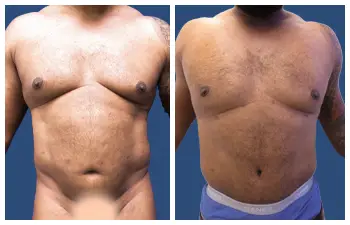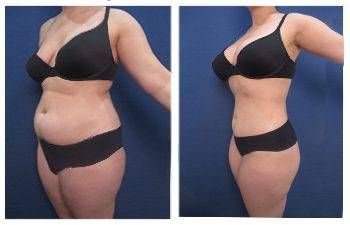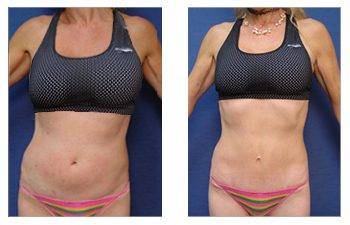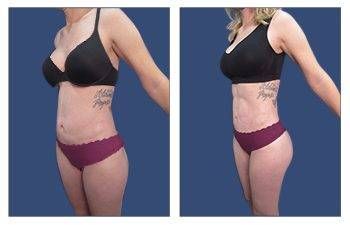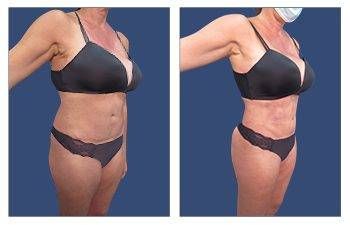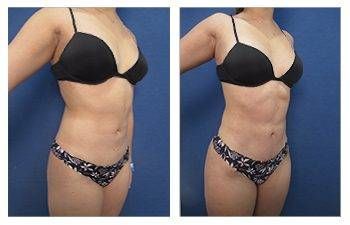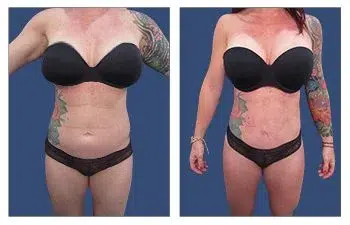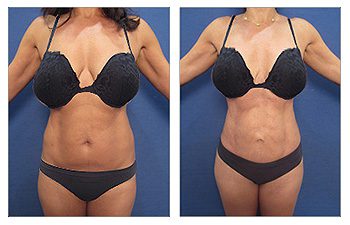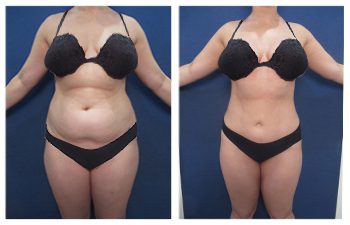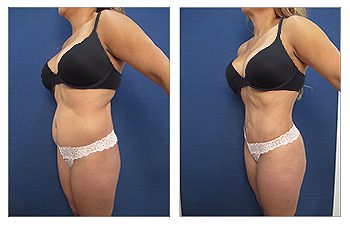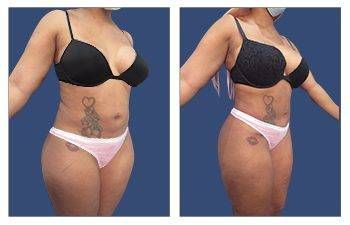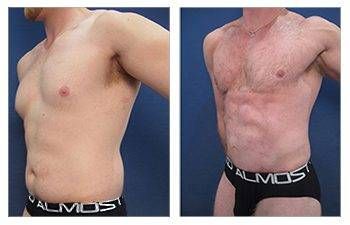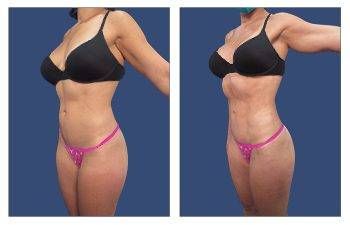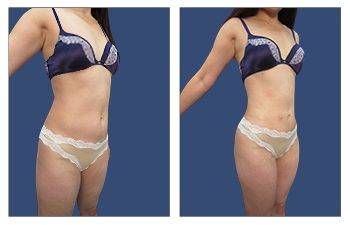Tummy Tuck Scar is a common concern for many considering the procedure. This visible sign of surgery often raises questions about its longevity, appearance, and impact on self-esteem. However, understanding the nature of tummy tuck scars can alleviate these worries significantly. The reality is that while every surgical procedure leaves some form of scar, there are numerous strategies to manage and minimize the visibility of your tummy tuck scar.
Understanding Tummy Tuck Scars
A tummy tuck scar results from the abdominoplasty procedure, and understanding how it forms and changes over time can provide valuable insight for those considering this type of cosmetic surgery.
Tummy tuck scars are formed from the incisions made during the operation. These incisions allow surgeons to remove excess skin and tighten abdominal muscles. As these surgical wounds heal, they transform into what we commonly recognize as tummy tuck scars.
The appearance of a typical tummy tuck scar undergoes significant changes throughout its maturation period. Initially, after surgery, the scar may appear fine and white but expect variations in color as the healing process progresses. It is common for the scar to deepen in color, turning purple or red before gradually fading into shades of pink and pale purple and finally settling on white after 18 months to 2 years.
Healing Journey of a Tummy Tuck Scar
The recovery phase of a tummy tuck scar extends up to two years, depending on individual variations in healing capabilities. Genetics and lifestyle habits can influence healing (Dr. Moein’s transformations).
Your Body’s Response to the Procedure
In addition to visual changes, you might also feel lumps and bumps under the dressing. These irregularities signify the development of scar tissue underneath the skin surface, which eventually smoothes out with proper care and adherence to the doctor’s post-operative instructions.
It should be noted that each patient reacts differently to surgical interventions, which is why each individual’s scarring pattern differs considerably from other cases. So always remember that there is no standard for comparison when evaluating your progress against someone else’s case. Instead, focus closely on following the surgeon’s recommended guidelines to achieve the best possible outcome regarding minimal visible long-term effects.
Next, we’re diving into “Factors Affecting Tummy Tuck Scarring.” We’ll explore how different elements shape your healed tummy’s final look and quality. We’ll specifically talk about how genetics and medical conditions can influence results.
Grasping the journey of a tummy tuck scar is vital for those contemplating this cosmetic procedure. From incision to healing, these scars transform significantly over time, influenced by genetics and lifestyle habits. It’s crucial to remember that each individual’s scarring pattern varies widely – there isn’t a standard yardstick for comparison. The best way forward?
Understanding Factors That Shape Tummy Tuck Scarring
Several key elements come into play regarding the healing process and the final appearance of a tummy tuck scar. The surgical technique, genetic factors, pre-existing health conditions, and post-operative care influence the outcome.
The Genetics Behind Scar Formation
A significant factor in scar formation lies within our genes. Some individuals naturally have an overactive healing response that leads to hypertrophic or keloid scarring. These types of scars are raised areas of thickened scar tissue caused by excessive collagen production during the body’s repair process.
Before surgery, your surgeon must know your family history regarding wound healing. This information can greatly affect how your scar progresses. Each patient experiences different progression rates due to their unique genetics and adherence to post-operative instructions. In cases with a high risk of abnormal scarring, steroid injections may be included in your treatment plan to manage this issue effectively.
Pre-existing Conditions: Their Role in Healing
In addition to genetics, underlying health issues such as diabetes can significantly impact wound recovery after a tummy tuck procedure. Poor blood circulation, common in diabetes, hampers effective wound healing and can lead to potentially problematic scarring due to slower overall recovery rates.
During the early stages after surgery, you may notice lumps and bumps under your dressing. Don’t panic. This is a normal occurrence and signifies that internal repair processes are underway, utilizing complex biological mechanisms specific to your body.
With knowledge about these influencing factors, we are now better equipped to discuss methods for minimizing the visibility of scars following tummy tuck procedures.
Tactics to Minimize Tummy Tuck Scars
Fear not the stubborn marks left behind from surgery. With consistent application of proper techniques and patience, significant improvements await down the line.
Understanding the factors influencing tummy tuck scarring, such as surgical techniques, genetics, health conditions, and post-op care, can help manage expectations. Be open about your family’s wound healing history to tailor treatment plans. Conditions like diabetes could slow recovery and lead to prominent scars.
Effective Strategies for Minimizing Tummy Tuck Scars
A tummy tuck procedure can leave you with noticeable scars, but there are effective strategies to reduce their visibility and enhance scar fade significantly.
Taping Techniques for Scars
One effective strategy is to employ specific taping techniques on your incisions. Consistently applying these techniques for up to 12 weeks after the operation can minimize the appearance of scars by providing crucial support to healing tissues and reducing tension along wound edges.
Additionally, topical treatments like antibiotic ointment or petroleum jelly have proven beneficial in accelerating wound healing and mitigating scar formation. Cocoa butter, with its anti-inflammatory qualities that can calm the skin and increase suppleness, is a natural option to consider during healing.
Silicone gel sheets or specialized scar creams offer an excellent alternative if considering advanced solutions beyond traditional methods. Silicone gel sheets work wonders by hydrating the top layer of skin, which helps balance collagen production – a key factor influencing the visibility of your final scar.
Note: Always consult with your healthcare provider before starting any new regimen involving medication application around operative sites.
Maintaining Regular Scar Massage
In addition to these approaches, regular massage over healed incision lines improves aesthetic outcomes. By breaking down dense bands within developing fibrous tissue through massage therapy, it’s possible to soften raised areas over time, thus helping diminish overall scarring presence.
Lifestyle Modifications Post-Surgery
The journey doesn’t end with the surgical procedure; certain lifestyle modifications following surgery also play a vital role in minimizing scarring. Staying adequately hydrated promotes optimal protein synthesis required for repair processes. Ensuring sufficient restful sleep allows the body to focus more effectively on restoration tasks, resulting in better post-operative results.
Armed with knowledge about various ways to potentially minimize the visibility of surgical scars after abdominoplasty (tummy tuck), we can now discuss detailed management and aftercare measures pertinent to incision sites, including beneficial dietary recommendations during this period.
Don’t let tummy tuck scars steal your thunder. You can use smart strategies like special taping techniques, topical treatments, and silicone gel sheets to give those scars a run for their money. Don’t forget to add regular scar massages into the mix, along with healthy lifestyle changes post-surgery.
Effective Strategies for Minimizing Tummy Tuck Scars
Managing your tummy tuck scar and ensuring optimal aftercare might seem challenging, but with the right approach, it’s a process you can master. Here are some key steps to care for your incision post-surgery and minimize scarring.
Nutrition: The Cornerstone of Wound Healing
How do we bridge the gap between surgery recovery and nutrition? How do we create an understanding that good nutrition is not just for overall health but also crucial in wound healing?
Your first step should be integrating certain nutrients into your diet as part of your tummy tuck surgery care instructions. Vitamin A is one such nutrient known to speed up wound repair.
Avoiding substances like corticosteroids before surgery is equally important. They slow down wound healing, which isn’t what you want when recovering from a procedure like a tummy tuck surgery. Quitting smoking months ahead can also enhance surgical wound healing due to its effects on blood circulation.
Lifestyle Changes Post-Surgery
Making lifestyle changes after tuck surgery goes beyond nutritional adjustments; it’s about making holistic changes that promote faster recovery while reducing scar visibility. This involves restful sleep for body regeneration and gentle exercise, such as walking, to improve blood flow without straining the incision site.
- Sun protection matters, too. Exposure can darken scars over time, so apply sunscreen or wear protective clothing outdoors during daylight hours post-surgery.
- If possible, seek professional advice on skincare products that minimize scar appearance.
- Keep stress levels under control – mental well-being impacts physical health significantly.
Fleur de Lis Incision & Its Impact On Scarring
Many skilled surgeons use the Fleur de Lis cut technique, which can lead to more visible scars. There’s too much skin both ways – side to side and top to bottom. However, the visibility of scarring is not always a certainty as it can vary significantly.
Post-tummy tuck scar management is no uphill battle when armed with the right strategies. Integrating nutrients like Vitamin A into your diet, avoiding harmful substances pre-surgery, and embracing lifestyle changes can fast-track wound healing. Remember to protect that incision from the sun, consider professional skincare advice for minimizing scars, and keep stress in check.
Different Variations of Incisions & Their Impact on Scarring
When considering tummy tucks, the type and placement of incisions are crucial factors that directly affect the resulting scars.
Fleur de Lis Incision
The Fleur de Lis technique is a popular choice among tummy tuck surgeons. It involves an inverted ‘T’ or anchor-shaped incision in the abdominal area, typically used when there is excess skin both horizontally and vertically.
This method allows for greater skin removal, resulting in superior contouring results. However, it does leave a vertical scar that may be visible with certain clothing styles.
Variations in Tummy Tuck Incisions
In addition to the Fleur de Lis technique, there are several other variations in tummy tuck surgery. For example, mini-abdominoplasty uses a shorter horizontal incision below the navel region. While this option may result in less noticeable scarring, it offers limited tightening benefits due to its smaller scope.
Extended abdominoplasty involves longer horizontal incisions that may also extend toward the backside areas. This approach is designed for patients with significant loose skin around their hips or sides and abdominal laxity. Although it leaves longer scars, they can be concealed compared to standard methods.
Circumferential Abdominoplasty & T-scar Variation
In circumferential abdominoplasty, sagging buttocks and thighs are addressed alongside abdomen reshaping by extending the incisions around the waistline, resembling a belt. This procedure, known as ‘belt lipectomy,’ provides comprehensive body lift effects, especially after significant weight loss. The circular scarring is usually concealed under most types of clothing.
A variant known as T-scar combines the advantages of traditional and Fleur de Lis techniques. It involves central muscle tightening through a vertical midline incision while removing excess lower belly flab through a broad transverse excision without lateral extensions, unlike the complete belt pattern.
Every one of these surgical designs plays a big role in how the healing happens and what the final scar looks like. With that said,
Regarding tummy tucks, the incision type and placement significantly influence the final scar. Options range from Fleur de Lis for extensive skin removal but visible scarring, mini-abdominoplasty with less noticeable scars but limited tightening benefits, to circumferential abdominoplasty that provides a comprehensive body lift with concealed circular scarring.
Effective Strategies for Minimizing Tummy Tuck Scars
The journey to scar minimization doesn’t end once the wound has completely healed. That’s when you can begin considering more intensive treatments such as Dermapen or skin needling.
“Skin needling is a powerful tool in our arsenal against scarring, stimulating natural healing processes and collagen synthesis.”
The Process & Benefits of Skin Needling
Skin needling—microneedling—is an innovative technique used to trigger the body’s repair mechanisms. This procedure creates tiny punctures in the skin, which initiate new collagen production.
This treatment goes beyond merely reducing scar visibility; it also enhances overall skin texture and tone. It proves particularly effective on hypertrophic scars—the raised red ones often formed post-surgery.
Numerous studies have confirmed significant improvements in surgical scars’ aesthetic appearance and symptomatology following microneedling treatments.
Laser Skin Resurfacing: A Powerful Ally Against Scarring
Note: Laser technology isn’t just about light—it’s about precision. Laser skin resurfacing removes layers of damaged cells one by one using concentrated pulsating beams of light, allowing healthier cells beneath them to surface and reduce scar visibility over time.
Pioneering advancements in laser technology have made this method safer than ever before, delivering exceptional results with minimal downtime required post-treatment.
Laser resurfacing also brings versatility—it effectively treats scarring from surgeries like abdominoplasty (tummy tucks) and other types of facial blemishes, including wrinkles and age spots.
Please remember: Always consult your surgeon before deciding upon any additional treatment methods discussed here—they will provide personalized advice based on factors unique to you, such as your health history or specific type/situation regarding existing post-surgical scarring.
Minimizing tummy tuck scars is a journey that begins after complete wound healing. With tools like skin needling and laser resurfacing, we can stimulate collagen production and remove damaged cells layer by layer to improve scar visibility, skin texture, and tone. But remember – always consult your surgeon before diving into these treatments.
FAQs in Relation to Tummy Tuck Scar
Do Tummy Tuck Scars Go Away?
Tummy tuck scars fade over time, typically reaching their final appearance 18 months to 2 years post-surgery. However, they do not disappear completely.
What Do Tummy Tuck Scars Look Like?
A fresh scar is usually fine and white but changes color to deep purple, red, or pink as it matures before eventually fading to pale purple or white.
Do Tummy Tucks Leave Big Scars?
The scar size depends on the surgical technique used in your procedure. Some incisions may result in larger scars than others.
What Do Tummy Tuck Scars Look Like Years Later?
Most well-healed abdominoplasty (tummy-tuck) scars are thin and pale a few years after surgery. They blend into natural skin tones, making them less noticeable with proper care and management.
Conclusion
Understanding the nature of tummy tuck scars is crucial in managing expectations and facilitating recovery. Your hereditary makeup, medical issues, and diet may all contribute to how the scars heal.
Various strategies, such as using tapes on incisions or applying topical treatments, can help minimize the visibility of tummy tuck scars. The type of incision used during surgery also impacts scarring, with variations suited to varying patient needs.
Once completely healed, more intensive treatments like skin needling offer promising results for further minimizing the appearance of scars.
If you’re considering a tummy tuck but are worried about scarring, SurgiSculpt provides comprehensive guidance and care throughout your body image journey. Our team specializes in cosmetic plastic surgery, prioritizing patient education and delivering top-notch care. Ready to take control of your body image journey? Visit us at SurgiSculpt, where we’ll provide all the information you need regarding tummy tuck procedures, including effective ways to manage post-operative scarring.
